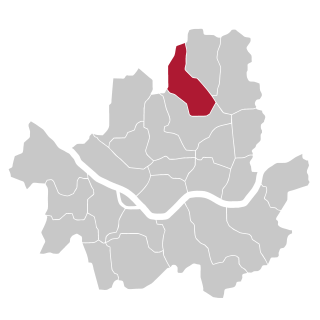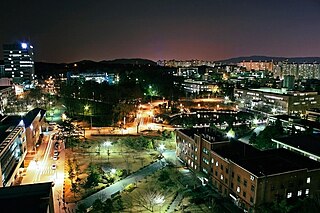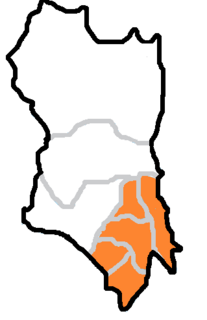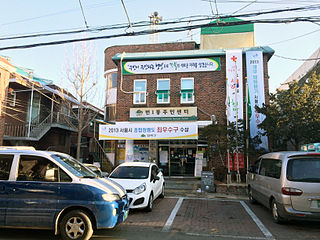
Gangbuk District (Gangbuk-gu) is one of the 25 gu which make up the city of Seoul, South Korea. Its name is derived from the fact that it is located at the north of Han river. It was created from neighbouring Dobong District (도봉구) in 1995. The current mayor is Park Gyeom-su(박겸수).

Nowon District (Nowon-gu) is a residential district of Seoul, South Korea, Located in the northeastern part of the metropolitan city. It has the highest population density in Seoul, with 619,509 people living in the area of 35.44 km².

Jungnang District (Jungnang-gu) is one of the 25 gu, or districts, of Seoul, South Korea. It is located on the north side of the Han River.

Chang-dong Station is a station on Seoul Subway Line 1 and Line 4. It is located in Chang-dong, Dobong-gu, Seoul. A shopping center was planned for this site, but the empty lot has never been developed due to the bankruptcy of the contractor behind said project. The station is, however, home to a cluster of pojangmacha stalls.

Chang-dong is a dong, neighbourhood of Dobong-gu in Seoul, South Korea

Dobong-dong is a dong, a neighbourhood of Dobong-gu in Seoul, South Korea. The dong is one of the four located in the Dobong District. According to the Köppen–Geiger climate classification system, the region is Dwa, or a humid continental climate. The average temperature is 11.1°C and approximately 147.5 cm of precipitation falls annually. The postal code for Dobong-bong is 132-010. The region is also referred to as Tobong-dong.

Ssangmun-dong is a dong, neighbourhood of Dobong-gu in Seoul, South Korea.

Beon-dong is a dong, neighbourhood of Gangbuk-gu in Seoul, South Korea.

Amsa-dong is a dong (neighbourhood) of Gangdong-gu in Seoul, South Korea. The dong is well known for the Amsa-dong Prehistoric Settlement Site, in which Neolithic remains were excavated after a large amount of diagonal-line patterned earthenware was exposed by a flood in 1925.
Siheung-dong is a dong, neighbourhood of Geumcheon-gu in Seoul, South Korea.

Bogwang-dong is a dong, neighbourhood of Yongsan-gu in Seoul, South Korea.
Cheongun-dong is a dong, neighbourhood of Jongno-gu in Seoul, South Korea.
Hyoja-dong is a dong, neighbourhood of Jongno-gu in Seoul, South Korea.

Ihwa-dong is a dong, neighbourhood of Jongno-gu in Seoul, South Korea.

Hyehwa-dong is a dong, neighbourhood of Jongno-gu in Seoul, South Korea.

Changsin-dong is a dong, neighbourhood of Jongno-gu in Seoul, South Korea.

Anguk-dong is a dong, neighbourhood of Jongno-gu in Seoul, South Korea. It is a legal dong administered under its administrative dong, Samcheong-dong.

Anam-dong is a dong, neighbourhood of Seongbuk-gu in Seoul, South Korea.

Bomun-dong is a dong, neighbourhood of Seongbuk-gu in Seoul, South Korea.
Bangsan-dong is a legal dong, or neighbourhood of the Jung-gu district in Seoul, South Korea and governed by its administrative dong, Euljiro 3, 4, 5ga-dong.




















